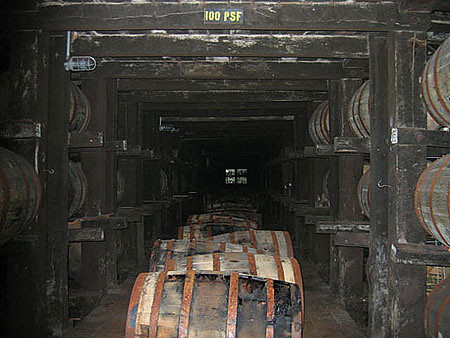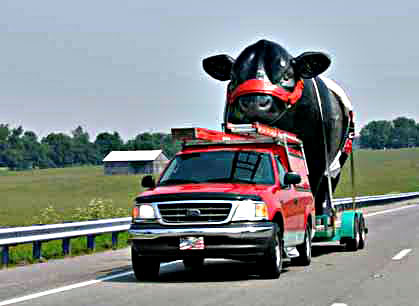I thought I'd post my bibliography handout, which goes with my Computers and Writing 2006 presentation "Ong’s Digital Turn: Published and Unpublished Writings after Orality and Literacy." There should be streaming video archives of a number of the presentations at
http://richrice.com/cw/website. On it are a number of unpublished material found in the archives.
Select Bibliography for "Ong’s Digital Turn: Published and Unpublished Writings after Orality and Literacy"“Kleine, Michael and Frederic Gale. “The Elusive Presence of the Word: An Interview with Walter Ong.”
Forum 7.2 (1996): 65-86.
Ong, Walter J. “A.M.D.G.: Dedication or Directive?”
Review for Religious 11 (1952): 257-263. Rpt. in
Faith and Contexts. Vol. 3:
Further Essays, 1952-1990. Ed. Thomas J. Farrell and Paul A. Soukup. Atlanta: Scholars Press, 1992. 1-8.
---. “The Church and Cosmic History.”
American Catholic Crossroads: Religious-Secular Encounters in the Modern World. New York: The Macmillian Company, 1959. 1-15.
---. “Digitization Ancient and Modern: Beginnings of Writing and Today’s Computers.”
Communication Research Trends 18.2 (1998): 4-21. Rpt. in
An Ong Reader: Challenges for Further Inquiry. Ed. Thomas J. Farrell and Paul A. Soukup. Cresskill, NJ: Hampton Press, 2002. 527-49.
---. “Ecology and Some of Its Future.”
Explorations in Media Ecology 1.1 (2002): 5-11.
---. "Evolution and Cyclicism in Our Time."
Thought 34 (1959-60): 547-68. Rpt in revised form in
Darwin's Vision and Christian Perspectives. Ed. by Walter J. Ong. New York: Macmillan, 1960. 125-48. Rpt. in
In the Human Grain: Further Explorations of Contemporary Culture. New York: Macmillan, 1967. 61-82; Rpt. in
Faith and Contexts. Vol. 2:
Supplementary Studies, 1946-1989. Ed. Thomas J. Farrell and Paul A. Soukup. Atlanta: Scholars Press, 1992. 85-103.
---. Forward to
The Barefoot Expert: The Interface of Computerized Knowledge Systems and Indigenous Knowledge Systems. By Doris M. Schoenhoff. Westport, CT: Greenwood Press, 1993. ix-xii.
---. Forward to
Electric Rhetoric: Classical Rhetoric, Oralism, and a New Literacy. By Kathleen E. Welch. Cambridge: MIT Press, 1999. xiii-xiv.
---. “Hermeneutic Forever: Voice, Text, Digitization, and the ‘I.’”
Oral Tradition 10.1 (1995): 3-36. Rpt. in
Faith and Contexts. Vol. 4:
Additional Studies and Essays 1947-1996. Ed. Thomas J. Farrell and Paul A. Soukup. Atlanta: Scholars Press, 1999. 183-203.
---. “Information and/or Communication: Interactions.”
Communication Research Trends 16.3 (1996): 3-16. Rpt. in
Faith and Contexts. Vol. 4:
Additional Studies and Essays 1947-1996. Ed. Thomas J. Farrell and Paul A. Soukup. Atlanta: Scholars Press, 1999. 217-38. Rpt. in
An Ong Reader: Challenges for Further Inquiry. Ed. Thomas J. Farrell and Paul A. Soukup. Cresskill, NJ: Hampton Press, 2002. 505-25.
---. “Knowledge in Time.” Introduction to
Knowledge and the Future of Man: An International Symposium. Ed. Walter J. Ong. New York: Holt, Rinehart, and Winston, 1968. 3-38. Rpt. in
Faith and Contexts. Vol. 1.
Selected Essays and Studies, 1952-1991. Ed. Thomas J. Farrell and Paul A. Soukup. Atlanta: Scholars Press, 1992. 127-53.
---. "The Knowledge Explosion and the Sciences of Man."
American Benedictine Review 15.1 (1964): 1-13. Rpt as "The Knowledge Explosion in the Humanities" in
In the Human Grain: Further Explorations of Contemporary Culture. New York: Macmillan, 1967. 41-51. Rpt. as "The Knowledge Explosion in the Humanities" in
Faith and Contexts. Vol. 4:
Additional Studies and Essays 1947-1996. Ed. Thomas J. Farrell and Paul A. Soukup. Atlanta: Scholars Press, 1999. 55-68.
---.
Language as Hermeneutic: A Primer on the Word and Digitization. Ts. Walter J. Ong Manuscript Collection. Pius XII Memorial Library, Saint Louis University.
---. “Oralism to Online Thinking.”
Explorations in Media Ecology 2.1 (2003): 43-4.
---.
Orality and Literacy: The Technologizing of the Word. London: Methuen, 1982.
---. “Orality, Textuality, and Electronics Unlimited.” Ts. Walter J. Ong Manuscript Collection. Pius XII Memorial Library, Saint Louis University.
---.
The Presence of the Word: Some Prolegomena for Cultural and Religious History. New Haven: Yale UP, 1967.
---. “Secondary Orality and Secondary Visualism.” Ts. Walter J. Ong Manuscript Collection. Pius XII Memorial Library, Saint Louis University.
---. "Secular Knowledge, Revealed Religion, and History."
Religious Education 52.5 (1957): 341-49. Rpt as "Secular Knowledge and Revealed Religion" in
American Catholic Crossroads: Religious-Secular Encounters in the Modern World. New York: The Macmillian Company, 1959. 74-95.
---. “Time, Digitization, and Dali’s Memory.” Ts. Walter J. Ong Manuscript Collection. Pius XII Memorial Library, Saint Louis University.
---. “Voice, Text, Fundamentalism, Hermeneutic, and God’s Word: The Personal Grounding of Truth.” Ts. Walter J. Ong Manuscript Collection. Pius XII Memorial Library, Saint Louis University.
---. “Writing is a Technology that Restructures Thought.”
The Written Word: Literacy in Transition. Ed. Gerd Baumann. Oxford: Clarendon Press, 1986. 23-50. Rpt. in
Faith and Contexts. Vol. 4:
Additional Studies and Essays 1947-1996. Ed. Thomas J. Farrell and Paul A. Soukup. Atlanta: Scholars Press, 1999. 143-168.
Swearingen, C. Jan. “On Photographic ‘Literacy’: An Interview with Walter J. Ong.”
Exposure 23.4 (1985): 19-27.
Cross posted to Notes from the Walter J. Ong Archive.computer and writing | C&W2006 | digital culture | walter ong | Walter J Ong
 I'm back from Computers and Writing. Well, I've been back for a week, but less than 100 minutes after my plane landed in St. Louis, Tracey and I were on the road to Kentucky for a Virtue and Vice themed vacation (we visited the Jim Beam and Maker's Mark distilleries and the
I'm back from Computers and Writing. Well, I've been back for a week, but less than 100 minutes after my plane landed in St. Louis, Tracey and I were on the road to Kentucky for a Virtue and Vice themed vacation (we visited the Jim Beam and Maker's Mark distilleries and the 
 Eurovision? What?
Eurovision? What? 


 I don't remember where I learned about
I don't remember where I learned about 

